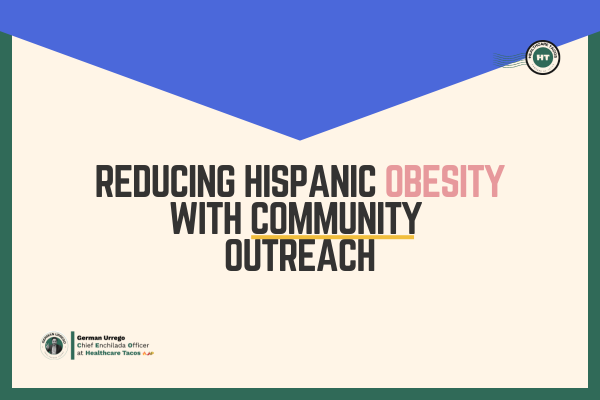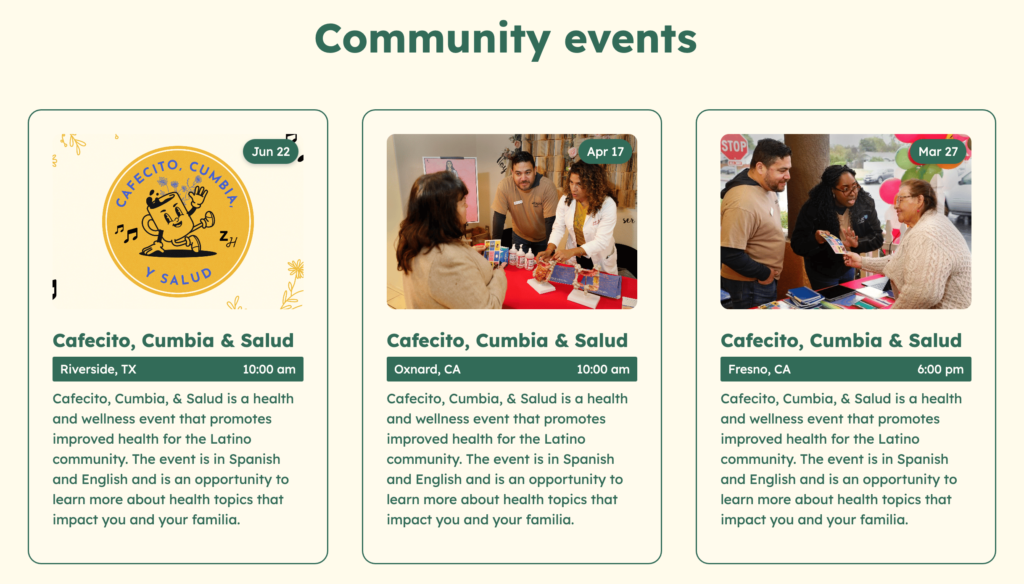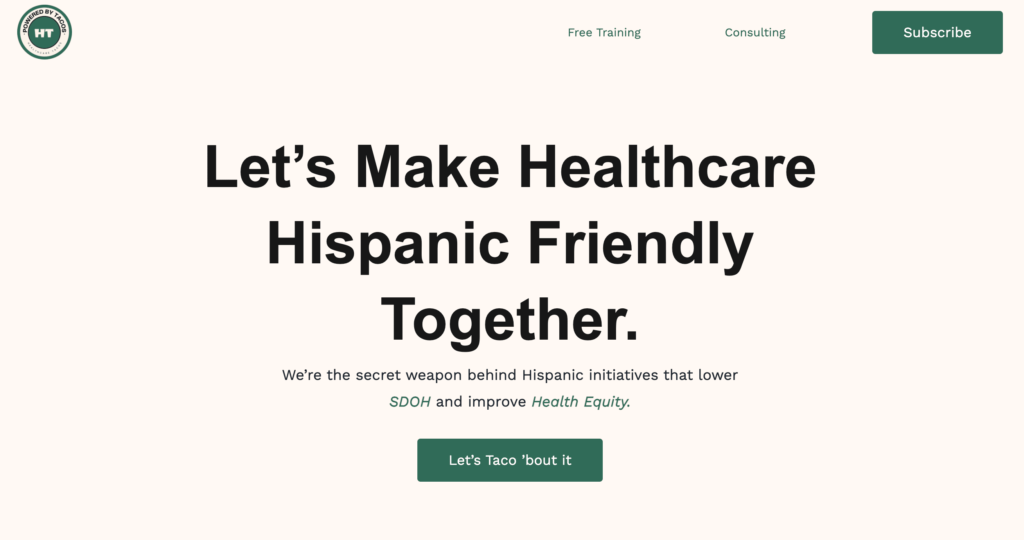

Amig@s – let’s taco ’bout reducing Hispanic obesity.
Here is the deal.
There is no one-size-fits-all solution to obesity challenges for Hispanics.
This makes it different from other populations, where cultural, economic, and physical inactivity can contribute to obesity rates.
But here is this.
When communities take the lead, real change happens.
So, today, I’m going to chat about how community outreach can help attack obesity from the ground up.
Let’s taco ’bout it.
Amig@s – let’s taco ’bout reducing Hispanic obesity.
Here is the deal.
There is no one-size-fits-all solution to obesity challenges for Hispanics.
This makes it different from other populations, where cultural, economic, and physical inactivity can contribute to obesity rates.
But here is this.
When communities take the lead, real change happens.
So, today, I’m going to chat about how community outreach can help attack obesity from the ground up.
Let’s taco ’bout it.
![]()
Three Insights 🌶️
I. Cultural Acknowledgment
A program that does NOT fit the community won’t make an impact.
Do not ever forget this.
This is not just about creating programs; it’s about creating THE right programs.
Here is an example.
For Hispanics, traditional foods and family-centered meals are at the heart of daily life.
That’s why simply telling people to “eat healthier” won’t work; there has to be a balance.
And if you craft programs that respect cultural favorites while introducing healthier twists.
Trust met.
They will resonate deeply among Hispanics.
Now, this is simple.
Think about it like adding a simple dash of cilantro to a tried-and-true recipe.
You’re keeping what’s essential but giving it a fresh, healthier twist.
II. Trust is Key to Engagement
There is nothing new here.
As you already know, if my community does NOT trust you, you are completely done. Just playing, LOL.
They just won’t listen.
Now, here is something to note. Building trust is often the missing ingredient in health initiatives.
Many Hispanics have a history of mistrust or disconnect with healthcare providers.
Making it essential to approach outreach with genuine empathy and respect.
Right?
That is WHY.
Community health workers who understand both the language and the culture.
Can be a tremendous help and of-course game-changers.
In other words, so you can get it ;)
In any TRUST approach.
Community health workers are like the salsa verde to your tacos, a fresh addition that enhances everything else.
III. Accessibility Drives Success
This is another point that I hope does NOT surprise you.
Well, I truly hope not.
Because even if you craft the best program in the world for my community, but they can NOT access it.
It is pointless.
Also, even with the right message and trusted messengers, logistical barriers can keep people from participating.
So, factors like work schedules, transportation, and language access play a role here.
So what is the solution?
Simply meet people where they are; let me say this once again.
Meet people where they are.
Please consider things such as weekend workshops, virtual education, and local events to make it easier for families to engage.
So, I hope you apply a few of these in your Hispanic approach and if you need help.
Reach out to me or check this out here.
Insights
I. Cultural Acknowledgment
A program that does NOT fit the community won’t make an impact.
Do not ever forget this.
This is not just about creating programs; it’s about creating THE right programs.
Here is an example.
For Hispanics, traditional foods and family-centered meals are at the heart of daily life.
That’s why simply telling people to “eat healthier” won’t work; there has to be a balance.
And if you craft programs that respect cultural favorites while introducing healthier twists.
Trust met.
They will resonate deeply among Hispanics.
Now, this is simple.
Think about it like adding a simple dash of cilantro to a tried-and-true recipe.
You’re keeping what’s essential but giving it a fresh, healthier twist.
II. Trust is Key to Engagement
There is nothing new here.
As you already know, if my community does NOT trust you, you are completely done. Just playing, LOL.
They just won’t listen.
Now, here is something to note. Building trust is often the missing ingredient in health initiatives.
Many Hispanics have a history of mistrust or disconnect with healthcare providers.
Making it essential to approach outreach with genuine empathy and respect.
Right?
That is WHY.
Community health workers who understand both the language and the culture.
Can be a tremendous help and of-course game-changers.
In other words, so you can get it ;)
In any TRUST approach.
Community health workers are like the salsa verde to your tacos, a fresh addition that enhances everything else.
III. Accessibility Drives Success
This is another point that I hope does NOT surprise you.
Well, I truly hope not.
Because even if you craft the best program in the world for my community, but they can NOT access it.
It is pointless.
Also, even with the right message and trusted messengers, logistical barriers can keep people from participating.
So, factors like work schedules, transportation, and language access play a role here.
So what is the solution?
Simply meet people where they are; let me say this once again.
Meet people where they are.
Please consider things such as weekend workshops, virtual education, and local events to make it easier for families to engage.
So, I hope you apply a few of these in your Hispanic approach and if you need help.
Reach out to me or check this out here.
![]()
Two Actionable Steps 🌮
I. Healthy Cooking Events
As I always say.
If it does NOT feel familiar to my community, it won’t stick at all.
Health education works best when it’s hands-on and culturally relevant. (Period)
One way to involve families is through cooking events where they get to learn how to make nutritious recipes, yet they are from home.
But do not take my word for it.
Here, you can see Zocalo Health doing some of the things I’m talking about.

For this.
You can use ingredients found in Hispanic kitchens to show that healthy eating is not a question of steering clear of tradition.
It’s just about making some rather simple adjustments.
Oh, and for teaching families how to ‘build the perfect taco’ (with slightly more veggie power).
You bring alterations that are sustained even after the event; trust me, I say this with confidence.
You will be surprised.
II. Create Spanish Visual Resources
I am sure you have learned by now that this is crucial to the process.
If people cannot comprehend what is given to them, they will not use it.
Because language should never be the reason for worse health.
Therefore, offering Spanish language materials with pictures is important for my community regardless of their literacy level.
So they can finally get access to important information, but be careful to write.
Flyers, recipe cards, and short health tips should be created with simple, easy to understand images to help close the gap.
Always with the aim of assisting them to select the healthy option easily.
I mean, if you want to know why this is important.
Here it is, this simple little action.
This will make the accessibility of this project easier and, in turn, make the information easier to understand and receive.
Actionable Steps
I. Healthy Cooking Events
As I always say.
If it does NOT feel familiar to my community, it won’t stick at all.
Health education works best when it’s hands-on and culturally relevant. (Period)
One way to involve families is through cooking events where they get to learn how to make nutritious recipes, yet they are from home.
But do not take my word for it.
Here, you can see Zocalo Health doing some of the things I’m talking about.
For this.
You can use ingredients found in Hispanic kitchens to show that healthy eating is not a question of steering clear of tradition.
It’s just about making some rather simple adjustments.
Oh, and for teaching families how to ‘build the perfect taco’ (with slightly more veggie power).
You bring alterations that are sustained even after the event; trust me, I say this with confidence.
You will be surprised.
II. Create Spanish Visual Resources
I am sure you have learned by now that this is crucial to the process.
If people cannot comprehend what is given to them, they will not use it.
Because language should never be the reason for worse health.
Therefore, offering Spanish language materials with pictures is important for my community regardless of their literacy level.
So they can finally get access to important information, but be careful to write.
Flyers, recipe cards, and short health tips should be created with simple, easy to understand images to help close the gap.
Always with the aim of assisting them to select the healthy option easily.
I mean, if you want to know why this is important.
Here it is, this simple little action.
This will make the accessibility of this project easier and, in turn, make the information easier to understand and receive.
![]()
One Piece of Advice 💃
To finish this up, here is this, my friends.
Kindly help my community by making healthy living a community tradition.
Because let’s be real.
Change only happens when health becomes part of everyday life, not just a program.
So, in my opinion.
The key to reducing obesity rates is not quick fixes or temporary campaigns.
It’s all about making healthy habits part of our culture.
Can you imagine that?
This means working with families, schools, and local leaders to weave wellness into DAILY routines.
Just like all the best family recipes we all know. This lasting change is passed down, shared, and enjoyed together.
I know this is a simple idea, but it is incredibly powerful.
Because when my community takes ownership of their health, the impact lasts for GENERATIONS…
And that, mis amig@s, is exactly what we should be AIMING for.
Piece of Advice
To finish this up, here is this, my friends.
Kindly help my community by making healthy living a community tradition.
Because let’s be real.
Change only happens when health becomes part of everyday life, not just a program.
So, in my opinion.
The key to reducing obesity rates is not quick fixes or temporary campaigns.
It’s all about making healthy habits part of our culture.
Can you imagine that?
This means working with families, schools, and local leaders to weave wellness into DAILY routines.
Just like all the best family recipes we all know. This lasting change is passed down, shared, and enjoyed together.
I know this is a simple idea, but it is incredibly powerful.
Because when my community takes ownership of their health, the impact lasts for GENERATIONS…
And that, mis amig@s, is exactly what we should be AIMING for.








